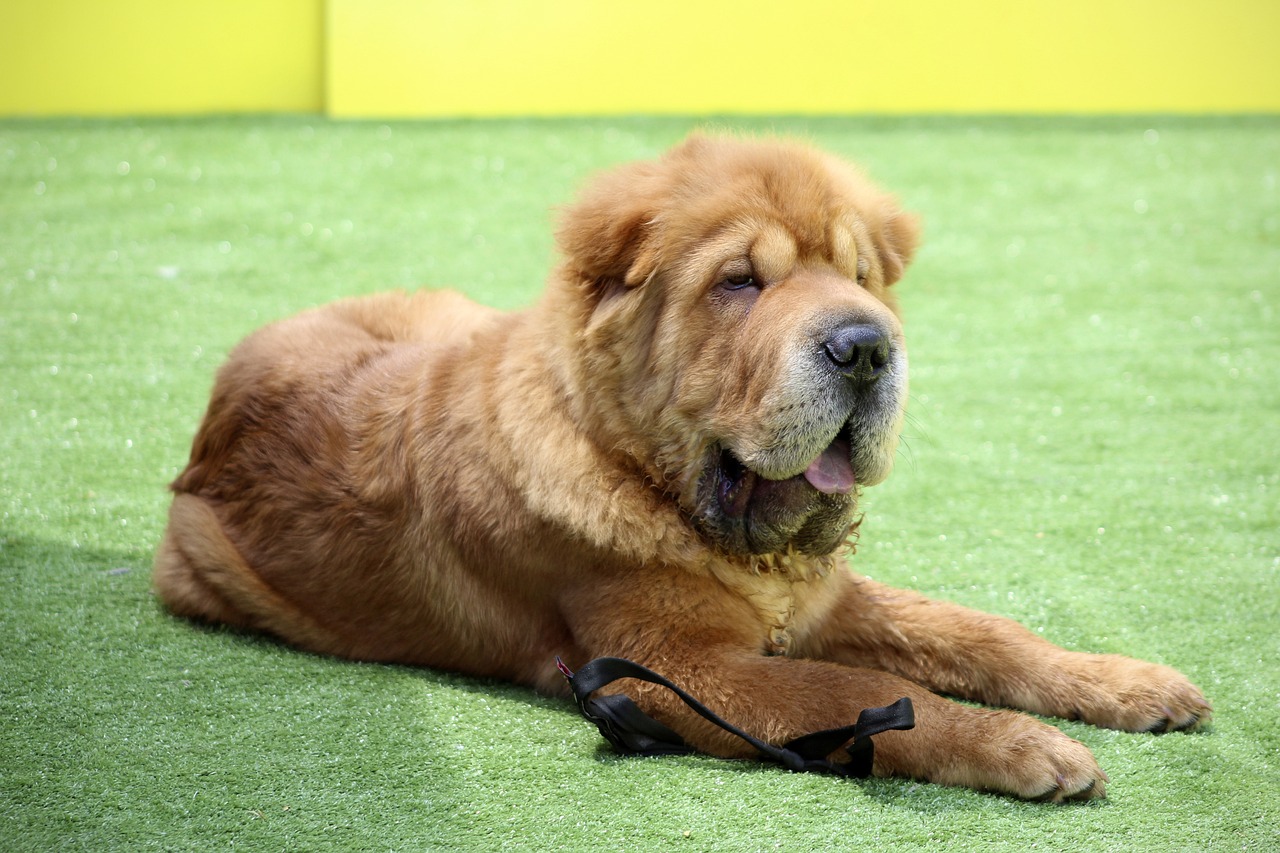The Chinese Shar Pei, with its distinctive deep wrinkles and blue-black tongue, is a breed known for its loyalty and calm disposition. While they are not the most active breed, Shar Peis require regular exercise to maintain their health and prevent behavioral issues. This article will outline how much exercise is appropriate for a Shar Pei and what activities are most beneficial.
1. Assessing Shar Pei’s Exercise Needs
Shar Peis generally need a moderate amount of exercise, about 30 minutes to an hour each day. This can be broken into two or three shorter sessions to keep them engaged without overexertion.
2. The Benefits of Regular Exercise for Shar Peis
Regular physical activity is essential for Shar Peis to manage their weight, maintain good cardiovascular health, and support joint function. It also provides mental stimulation, which can help curb potential stubbornness or behavioral problems.
3. Ideal Exercise Types for Shar Peis
Given their calm nature, Shar Peis enjoy steady and moderate activities like walking or leisurely hikes. They may also engage in short bursts of play, but they typically don’t require intense exercise sessions.
4. Mental Stimulation Through Exercise
Mental stimulation can be incorporated into exercise routines for Shar Peis through activities like obedience training, puzzle toys, and scent tracking games. These not only exercise the body but also engage the mind.
5. Socialization and Exercise
Shar Peis can be wary of strangers and other dogs, so socialization exercises should be approached with care. Structured activities that include social interaction can help Shar Peis become more adaptable and friendly.
6. Adapting Exercise to Your Shar Pei’s Age
Exercise for Shar Pei puppies should be controlled to avoid damage to developing joints, while adult Shar Peis can enjoy more vigorous activities. Senior Shar Peis may need shorter and less frequent exercise sessions.
7. Recognizing the Signs of Over-Exercising
Shar Peis can be prone to heat stress and joint issues, so it’s important to recognize signs of over-exercising, such as excessive panting, reluctance to move, or lameness.
8. Exercise in Different Climates
Shar Peis do not tolerate heat well due to their wrinkled skin and brachycephalic features. Exercise routines should be adjusted during hot weather to ensure they stay cool and hydrated.
9. The Role of Diet in Exercise Regimens
A balanced diet is crucial in supporting a Shar Pei’s exercise regimen. Proper nutrition ensures they have the energy for activity while preventing weight gain.
10. Monitoring Health Through Exercise
Regular exercise provides an opportunity to monitor your Shar Pei’s health, noting any changes in gait, energy levels, or enthusiasm for activity, which could indicate health issues.
Conclusion
Exercise is a key component of a Shar Pei’s health regimen. While they may not require extensive physical activity, they do need consistent, moderate exercise to stay healthy and content. Owners should consider their Shar Pei’s individual needs and consult with a veterinarian to develop an appropriate exercise plan.
Frequently Asked Questions About Exercising A Shar Pei
1. How much exercise does a Shar Pei need?
A Shar Pei typically needs about 30 minutes to an hour of exercise per day. This can be split into two sessions—one in the morning and one in the evening—to accommodate their moderate energy levels and to prevent overheating, which they are prone to due to their wrinkles and short snouts.
2. What type of exercise is best for a Shar Pei?
The best types of exercise for a Shar Pei include leisurely walks, short hikes in cooler weather, and playtime in a secure yard. Activities should be low-impact to protect their joints and prevent them from overheating.
3. Can Shar Peis go on long runs?
Shar Peis are not suited for long-distance running due to their risk of overheating and joint problems. Short, moderate-paced walks are more appropriate for their physical capabilities.
4. Do Shar Peis enjoy water and swimming?
Some Shar Peis may enjoy water and are capable swimmers, but care should be taken to ensure they don’t overexert themselves. Always supervise a Shar Pei when they are around water, and introduce swimming gradually.
5. How do I know if my Shar Pei is getting enough exercise?
A well-exercised Shar Pei should be calm and display no signs of destructive behavior at home. They should also maintain a healthy weight. If a Shar Pei becomes restless or starts showing behavioral issues, it may be a sign they need more exercise.
6. Are there specific exercises to avoid with Shar Peis?
Avoid any high-intensity or high-impact exercises that can cause joint stress or lead to overheating. Due to their unique physical structure, activities that require extreme endurance or agility should be avoided.
7. How can I provide mental stimulation for my Shar Pei during exercise?
Incorporate training exercises into their routine, and use toys that challenge them mentally during play. Shar Peis benefit from activities that require them to think and solve problems, like treat-dispensing puzzle toys.
8. What precautions should I take when exercising my Shar Pei in the heat?
Exercise your Shar Pei in the cooler parts of the day, provide plenty of shade and water, and keep sessions short when it’s hot. Watch for signs of heat exhaustion, such as excessive panting or lethargy.
9. What indoor exercises can I do with my Shar Pei?
Indoor exercises can include short play sessions with toys, hide and seek, and training new commands or tricks. This can be particularly useful during inclement weather or extreme temperatures.
10. How should I adjust exercise routines for a senior Shar Pei?
Senior Shar Peis may still enjoy gentle walks and play, but the duration and intensity should be reduced to match their energy levels and mobility. Regular, light exercise helps maintain their health, but it’s important to monitor for any signs of discomfort or fatigue.

 Toledo, United States.
Toledo, United States.
